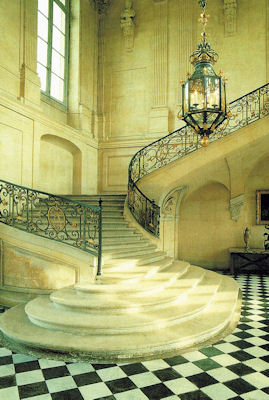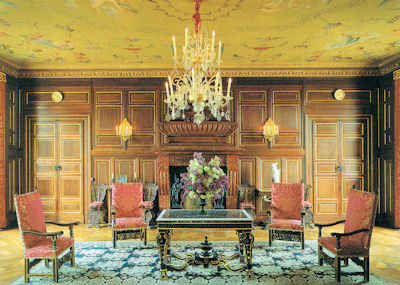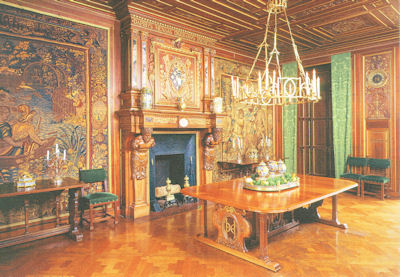The guardroom.

This room, at the time of Diane, was the guardroom.
The ceiling was painted uniformly.
Mr Moreau had each box painted with the name, emblem, and the period of occupation of successive owners of the Castle.
It can be read like a book, line by line from right to left in chronological order.
The oldest (born in 1165 year) and later, Mr Moreau.
We will talk about the current owners of the castle.
Mr Moreau's daughter married the Count of Leuse.
One of his descendants married Mr Charles Yturbe,
And this is one of their children Mr John Yturbe who currently owns the castle.
5 generations of the same family since 1860.
The castle is a private and inhabited by the family.
In the box on the right, we read the names of Louis de Breze and that of Jacques de Breze. Jacques is the father of Louis, husband of Diane. He had the mansion built that's to the left of the chapel and was destroyed during the Revolution.
Henri II was dazzled by the culture and the great intelligence of Diana. A12-year-old he made his first tournament and it is at this age that he decided to wear the colours of Diane, black and white colours of her widowhood.
I will now tell you about the beauty of Diana. According to Brantome, gossip columnist at the time, she was still beautiful at the age of 66 years and could for being!. A heartbroken young page in Diane's service would die on hearing of Diane's death. Closer to home, during the Revolution, Diane's tomb was desecrated. She was in a leaden coffin, was embalmed and eyewitnesses said she was in a perfect state of preservation and as had the legendary beauty that she had during her life.
Locks of hair were cut by eyewitnesses and we have a small amount you see in the Red Room.
His remains were buried at the foot of the church of Anet.
In 2008, while working, his remains were exhumed, identified through DNA testing and May 29, 2010, Diane returned to tthe tomb she should never have left.
I'm going to talk about the objects that fill this beautiful room.
The big painting is that of Marie de Medici, niece of Catherine de Medici and second wife of King Henry II.
Here is a great lady of the Italian nobility painted by Anton Van Dyck, Flemish painter of 16 centuries.
By Charles 9, second reigning son of Henry and Catherine. King during the massacre of St. Bartholomew, who died at age 23 of tuberculosis.
Here's the Duke of Penthièvre with his family, drinking a cup of chocolate.
On the mantelpiece, King Henry II.
In the inset, the castle as it was at the time of Diana.
The firewall at the time, Louis 14 (the Fourteenth) on each side, andirons and Hercules from the French Renaissance.
Two paintings of King Henry II and the beautiful Diane de Poitiers painted by Francesco Salviati.
Here and there in wood and here in this showcase ivory tobacco graters.
As Marie de Medici, a cartel Louis 14 on each side of the Nevers pot Nevers created by Urbino..
Under the cup of chocolate, a travel jewelry box that belonged to Diana.
Here a German 18th century ivory mug.
We are now going to see the vestibule.
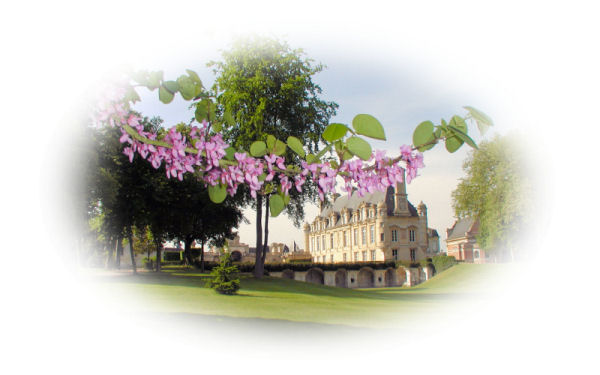
![]()
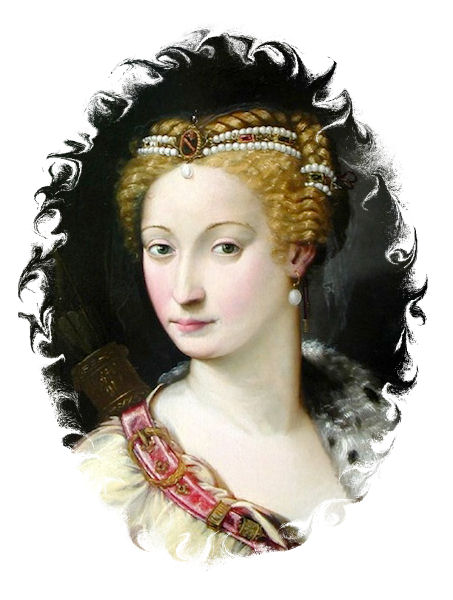
![]()
![]()
![]()
![]()
![]()
![]()



